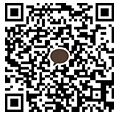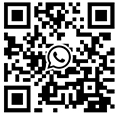The Standard of All Sleep Apnea Testing
Polysomnography
What is a Standard Polysomnography?
A polysomnography is a test that can determine what problems are present during sleep.
Brainwaves, eye movement, a spirogram, respiratory capacity, electrocardiograms, SpO2,
and leg movement are all shown on one screen to monitor all physical activity
while sleeping. Since it is an examination done while sleeping,
testing is available at all times to fit all sleep schedules.
Types of Analyses Done by Certified Sleep Polysomnography
The polysomnography includes many different types of equipment,
and through a detailed analysis, we are able to diagnose the diseases while the patient is asleep.
When getting the diagnosis, there are many sensors attached to the body so it may seem awkward at first,
but we pride ourselves in providing state of the art facilities for a comfortable diagnosis.
-
Analysis of Sleeping
Method -
Analyze Brainwaves (EEG) and Eye Movement (EOG)
The changes between NREM (Non Rapid Eye Movement) 1st degree, 2nd degree,
3rd degree, 4th degree and REM (Rapid Eye Movement)
during sleep is analyzed
-
Analysis of Breathing
While Asleep -
Respiratory Air Flow Sensor (temperature/pressure sensor),
Thorax/Abdomen Movement Belt, Etc.- Check if there’s light-breathing/no-breathing while asleep
- Analyze the duration and the number of times repeated in order to see
the smoothness in breathing
-
Analysis of Movement
While Asleep -
Analyze muscle condition (EMG), sleeping position sensor, etc
Electromyogram of both arms and legs and sleeping position sensors help
review the vibrations of the muscles while asleep
-
Cardiovascular
Analysis -
Measure the heart rhythm (ECG) and Oxygen
concentration sensor, etc.Record oxygen concentration, heart rate, electrocardiogram (ECG)
while patient is asleep
-
Overall Condition
Analysis -
Video recorded
- While the patient is asleep, the sleeping process will be recorded
- Assess overall sleeping condition

Why GNG for Certified Sleep Polysomnography?
Advantage #1
Largest Sleep Center in Asia
After many years treating snoring/sleep apnea, GNG has successfully become
Korea’s largest sleep center GNG is always putting our are doing our best to provide
the most professional and comfortable diagnosis for our patients.
The Best Sleeping Environment

A whole floor is dedicated to the sleep center so that patients will not be bothered while they’re asleep.
Soundproof rooms, outside noise minimized
Personal bathrooms and shower room
Always keeping patients’ comfort first, comfortable and cozy facility
Advantage #2
Diagnosis by sleep doctor accredited by RPSGT
(Board of Registered Polysomnographic Technologists)
and a professional polysomnographic technologist
will be available 24 hours
The diagnosis will be done by the sleep doctor who is accredited by RPSGT
and has extensive experience and knowledge through clinical research.
The specialist will bring a satisfactory result by examining and analyzing
the correct snoring and sleep apnea treatment method.

Advantage #3
Uses a world-renowned
polysomnography device for accurate results
For close examination GNG uses the world renowned brands Grass and Embla.
Multiple devices and brands are used to negate the bias in results by certain devices
and use the devices to their strengths. Therefore a more accurate result can be determined.
Advantage #4
After the sleep diagnosis,
recommend needed solutions to fix all problems
The treatment plan is made through the sleep diagnosis,
accurate RDI, endoscope check, and 3-D CT review.


Advantage #5
Cooperation With World Renowned Sealy Bed
Every single one of GNG’s examination rooms have a Sealy bed and pillow.
GNG strives to provide you with the most comfortable testing environment as possible.




